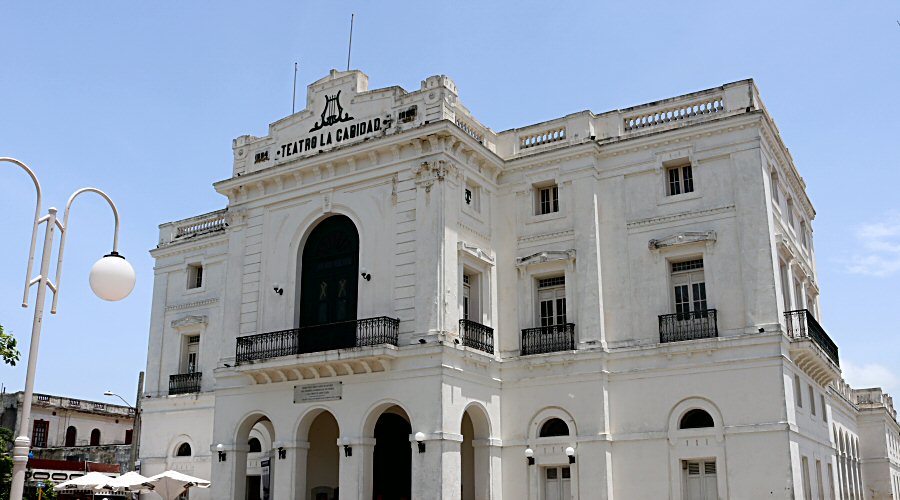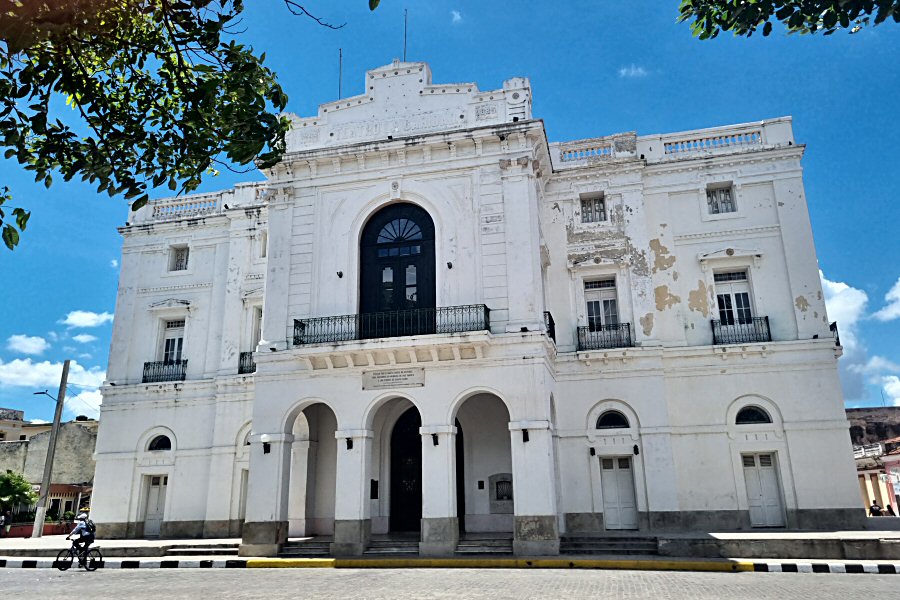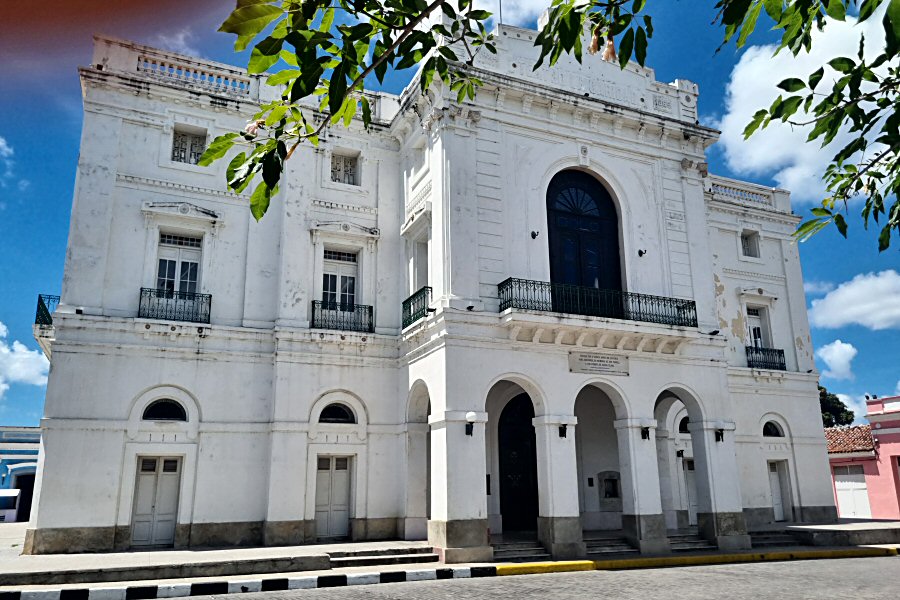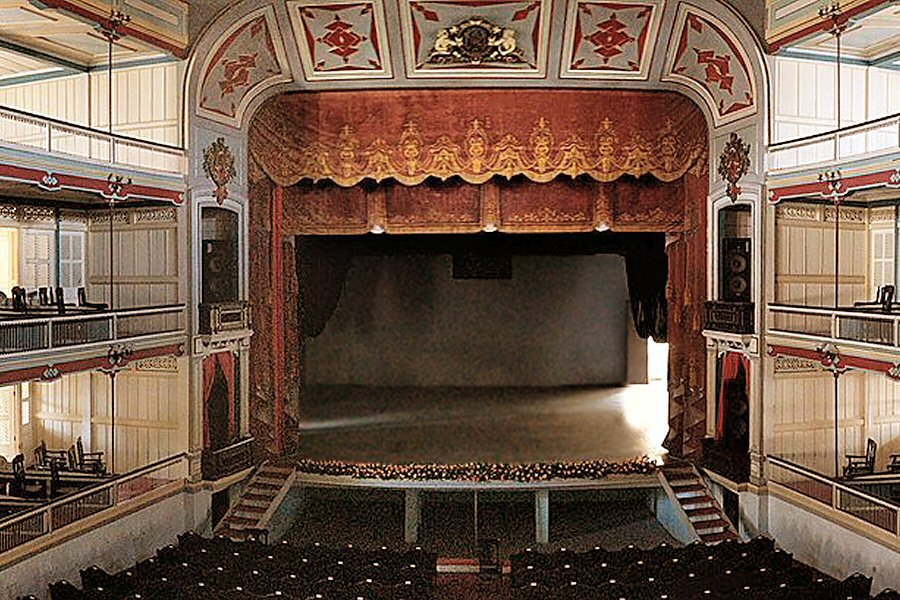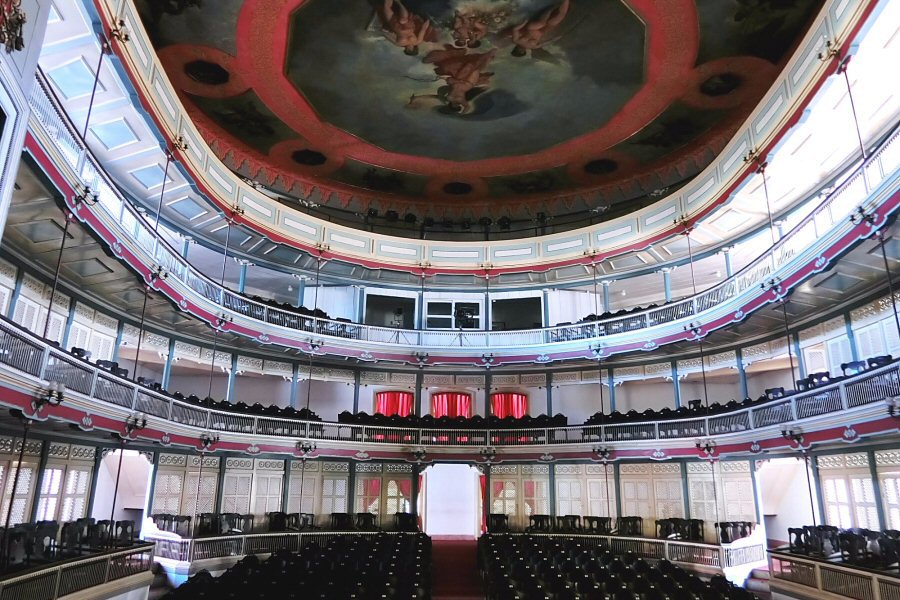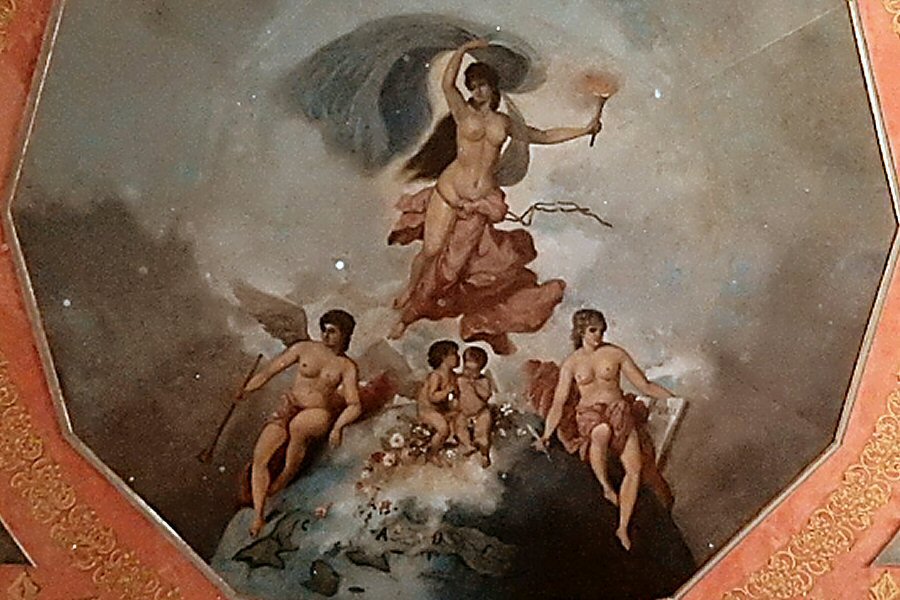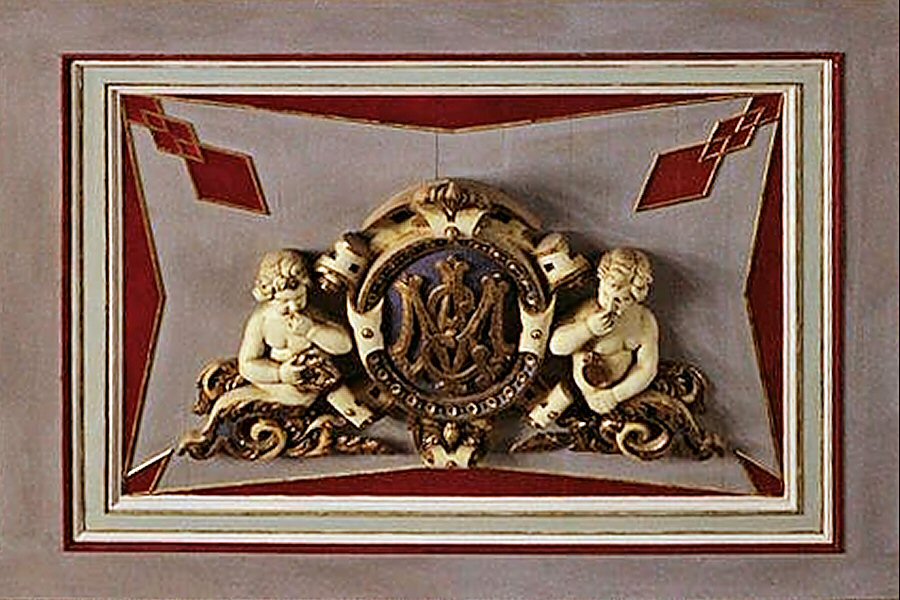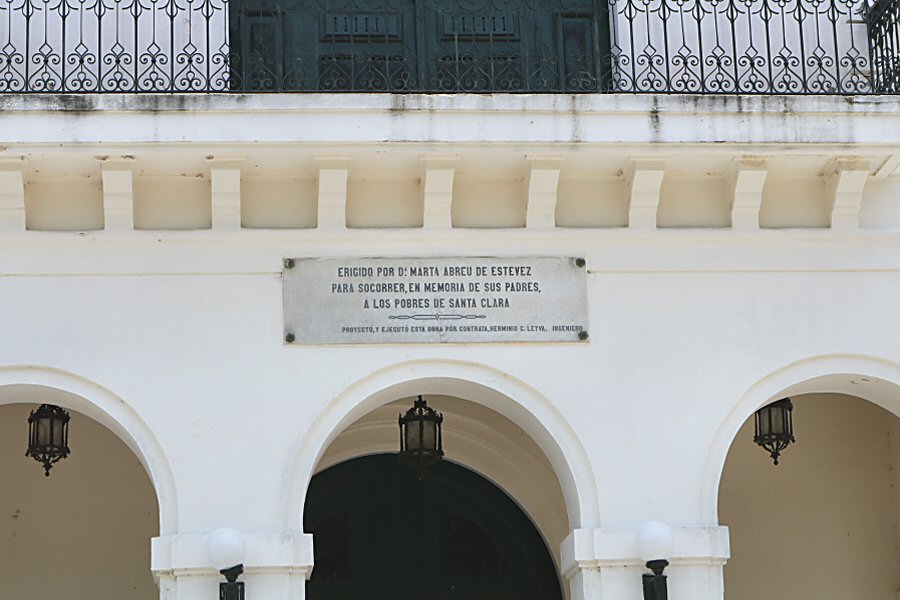
The Caridad theater, one of the few surviving theatres from
the colonial era in Cuba, is also one of the most elegant
buildings in the city of Santa Clara. Together with the
similar Sauto theater (Matanzas), and the Tomás Terry
theater (Cienfuegos) it makes up the trilogy of theaters
that existed in Cuba in the 19th century. It constitutes one
of the most expressive buildings that surrounds Leoncio
Vidal Park in the capital of Villa Clara.
The theater's name is based on the name of its dedication to
Our Lady of Charity of Cobre, the patron saint of Cuba, also
refering to the unique philanthropy of Marta Abreu Estévez.
This distinguished cultural institution is holding the
status of National Monument since 1981.
HISTORY
Marta Abreu de Estévez, a well-known benefactor who used her
wealth to help the poor and to spread education in Santa
Clara, was dreaming of bringing a theater building to Santa
Clara which she had admired during one of his visits to
Paris. Her proposal to build a theater in the city was
discussed and approved at the 1883 meeting of the Santa
Clara City Council. Her husband Dr. Luis Estévez y Romero
was tasked with selecting and procuring the land. Dr. Luis
Estévez would also be in charge of fulfilling the wish of
his wife Marta Abreu de Estévez, the main initiative for the
construction of a theater in the city.
Marta Abreu de Estévez was in favor of constructing the
theater building in the plot of the old Parish Church. She
convinced her husband about the location of the theater,
because the construction costs were covered entirely by
Marta Abreu de Estévez. Soon, it was decided that the
theater would be built on the field of the Ermita de la
Candelaria, the city's first church that served as the main
Parish Church for many years.
The theater building was designed by engineer Herminio Leiva
y Aguiler. Dr. Luis Estévez followed the suggestions of her
wife throughout the construction process. In just fourteen
months the building was completed and it was officially
opened on September 8, 1985. The inauguration took place on
a significant day, the feast of Our Lady of Charity of Cobre,
the patron saint of Cuba. At the opening ceremony, local
fans took the stage with the play "Los Lazos de la Familia
(Family Ties)”, and artist Camilo Salaya read the poem "A
Villa Clara." The evening closed with the polka "La
Pasionaria".
To remind Parish Church to the new generations, the
theater's stamp of the Hermitage of Candelaria was depicted
on the intermission curtain.
The next morning, the citizens of Santa Clara escorted Marta
Abreu to the performance in a carriage on a carpet of
flowers. She was presented with a polished 21-karat gold
medal on behalf of the people of Villa Clara in gratitude
for her unique contribution. The newspaper La Perseverancia
reported that the theater was completely packed with all of
"the cultured society of the time".
A few days later, Abreu signed the theater over to the City
Council, who would then manage it together and would donate
a portion of the profits to local charities.
Six days later, at the proposal of Councilman Juan Manuel
Martínez, the City Council unanimously approved granting Dr.
Luis Estévez Romero the status of illustrious son of the
city, in recognition of the valuable services he and his
wife provided to the city.
Years later, on April 4, 1894, at a meeting chaired by Mayor
Martínez Pupo, the street's name was changed to Estévez at
the request of the residents of San Juan Bautista Street.
Fourteen days later, the decision was revised, and it was
decided to name the street Luis Estévez and, to avoid
confusion with a similar surname in the future, to name it
after the city's adopted son.
World-renowned names and groups such as Enrico Caruso,
Libertad Lamarque, Jorge Negrete, Rosita Fornés, Lola Flores
Company, Chucho Valdés, Alicia Alonso, and the Cuban
National Ballet, the Enrique Arredondo Theater Company, and
the Codanza Company are among the celebrities who have
appeared on this theater stage since its opening.
Over time, the building underwent numerous renovations that
deviated from its original design. Even though, it was
restored it to its former glory in 1964, the local
government's lack of funding prevented proper maintenance.
In 2007, some roof timbers collapsed, forcing the building
to remain closed to the public for a period.
THE THEATER
The neoclassical three-storey theater building covers an area of 1,950 square meters. The U-shaped auditorium has a capacity of 500 spectators. It has eight lodges located at the edge of the stage, 16 additional lodges located on the balconies, 244 seats on the balconies and 76 seats on the ground. The lobby floor and sculptures are made of white English marble. The ironwork and seats were imported from the U.S.
Miguel Melero, a distinguished Cuban painter and sculptor, also professor at the School of San Alejandro, created the marble busts of Spanish playwrights Pedro Calderón and José Echegaray. The renowned Spaniard stage designer Miguel Arias worked on the various curtains and scenery. The relief decoration at the entrance and the sculptural ensemble for the pediment were the work of Simone Bossi. The Filipino-Cuban painter Camilo Salaya, a graduate of the San Fernando Academy in Madrid who later also decorated the Terry Theater in Cienfuegos, was in charge of decorating the ceiling with an allegorical representation of the dawn, with three women symbolizing genius, fame, and history, and the sides of the upper part of the stage.
Inside the building, there is also a small concert hall, a cafeteria, a restaurant, barbershop, a dance hall and space for recreational societies.
